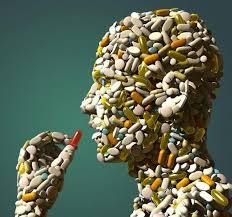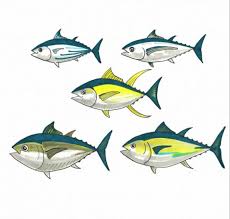The Antibiotic Crisis — Your Life Depends On It
Alexander Fleming’s Penicillin Revolutionizes Medicine
Quote by Alexander Fleming
Alexander Fleming was a Scottish physician-scientist who was recognized for discovering penicillin. The simple discovery and use of the antibiotic agent has saved millions of lives, and earned Fleming – together with Howard Florey and Ernst Chain, who devised methods for the large-scale isolation and production of penicillin – the 1945 Nobel Prize in Physiology/Medicine.
BEGINNINGS
On August 6, 1881, Alexander Fleming was born to Hugh Fleming and Grace Stirling Morton in Lochfield Farm, Scotland. Initially schooled in Scotland, Fleming eventually moved to London with three brothers and a sister, and completed his youth education at the Regent Street Polytechnic. He did not enter medical school immediately after; instead, he worked in a shipping office for four years. When his uncle John died, he willed equal shares of his estate to his siblings, nieces and nephews, and Fleming was able to use his share to pursue a medical education. In 1906, he graduated with distinction from St Mary’s Medical School at London University.
Fleming did not intend to begin a career in research. While serving as a private in the London Scottish Regiment of the Territorial Army, he became a recognized marksman. Wishing to keep Fleming in St Mary’s to join its rifle club, the club’s captain convinced him to pursue a career in research rather than in surgery, as the latter choice would require him to leave the school. The captain introduced him to Sir Almroth Wright, a keen club member and a pioneer in immunology and vaccine research, who agreed to take Fleming under his wing. It was with this research group that Fleming stayed throughout his entire career.
When World War I broke out, Fleming served in the Army Medical Corps as a captain. During this time, he observed the death of many of his fellow soldiers, not always from wounds inflicted in battle, but from the ensuing infection that could not be controlled. The primary means to combat infection was antiseptics, which frequently did more harm than good. In an article he wrote during this time, Fleming discussed the presence of anaerobic bacteria in deep wounds, which proliferated despite antiseptics. Initially, his research was not accepted, but Fleming continued undaunted and in 1922, he discovered lysozyme, an enzyme with weak antibacterial properties. History tells us that, while infected with a cold, Fleming transferred some of his nasopharyngeal mucus onto a Petri dish. Not known for fastidious laboratory organization, he placed the dish among the clutter at his desk and left it there, forgotten, for two weeks. In that time, numerous colonies of bacteria grew and proliferated. However, the area where the mucus had been inoculated remained clear. Upon further investigation, Fleming discovered the presence of a substance in the mucus that inhibited bacterial growth and he named it lysozyme. He also discovered lysozyme in tears, saliva, skin, hair and fingernails. He was soon able to isolate larger amounts of lysozyme from egg white, but in subsequent experiments found that this enzyme was effective against only a small number of non-harmful bacteria. Nevertheless, this would lay the groundwork for Fleming’s next great discovery.
‘MOLD JUICE’
In 1928, Fleming began a series of experiments involving the common staphylococcal bacteria. An uncovered Petri dish sitting next to an open window became contaminated with mold spores. Fleming observed that the bacteria in proximity to the mold colonies were dying, as evidenced by the dissolving and clearing of the surrounding agar gel. He was able to isolate the mold and identified it as a member of the Penicillium genus. He found it to be effective against all Gram-positive pathogens, which are responsible for diseases such as scarlet fever, pneumonia, gonorrhea, meningitis and diphtheria. He discerned that it was not the mold itself but some ‘juice’ it had produced that had killed the bacteria. He named the ‘mold juice’ penicillin. Later, he would say: “When I woke up just after dawn on September 28, 1928, I certainly didn’t plan to revolutionize all medicine by discovering the world’s first antibiotic, or bacteria killer. But I suppose that was exactly what I did.”
Although Fleming published the discovery of penicillin in the British Journal of Experimental Pathology in 1929, the scientific community greeted his work with little initial enthusiasm. Additionally, Fleming found it difficult to isolate this precious ‘mold juice’ in large quantities. It was not until 1940, just as he was contemplating retirement, that two scientists, Howard Florey and Ernst Chain, became interested in penicillin. In time, they were able to mass-produce it for use during World War II.
Fleming received many awards for his achievements. In 1928, he became Professor of Bacteriology at St Mary’s. He was elected a Fellow of the Royal Society in 1943 and elevated to the level of Emeritus Professor of Bacteriology at the University of London in 1948. A recipient of some thirty honorary degrees, in 1945, he won the most prestigious award, the Nobel Prize in Physiology/Medicine. He was made a Knight Bachelor by King George VI in 1944 and a Knight Grand Cross of the Order of Alfonso X the Wise in 1948. Time Magazine named Fleming one of the 100 most important people of the 20th century.

Antibiotics: Not Just Penicillin
So How Do Antibiotics Work Their Magic?
Can You Get Too Much Of A Good Thing?
Do Cows Go To Walgreens Or CVS?

“In the debate over the use of antibiotics in agriculture, a distinction is usually made between their clinical and nonclinical uses. Public health advocates don’t object to treating sick animals with antibiotics; they just don’t want to see the drugs lose their effectiveness because factory farms are feeding them to healthy animals to promote growth. But the use of antibiotics in feedlot cattle confounds this distinction. Here the drugs are plainly being used to treat sick animals, yet the animals probably wouldn’t be sick if not for the diet of grain we feed them.”
― Michael Pollan
Drug Resistant Bacteria Can Kill
Why Isn’t Big Pharma Working On New Antibiotics?

Why so little research on new antibiotics?

 Pew Trust brings its expertise and passion to the table
Pew Trust brings its expertise and passion to the table
Answer could be as plain as the nose on your face









